- Home
- Paula Byrne
The Real Jane Austen Page 9
The Real Jane Austen Read online
Page 9
4
The Subscription List
This is a novel in five duodecimo volumes, dated 1796. The title page reads Camilla: or, A Picture of Youth. By the Author of Evelina and Cecilia. It was printed for two publishers, T. Payne at the Mews Gate, and Cadell and Davies in the Strand. A dedication to Queen Charlotte carries the name of F. d’Arblay, who some years earlier had been employed by Her Majesty as Second Keeper of the Robes. Madame d’Arblay was known to her friends as Fanny Burney, daughter of Dr Johnson’s friend, the famous musical historian Charles Burney.
There was a huge sense of anticipation in the fashionable literary world for the third offering of one of the nation’s favourite female authors. What increased the sense of excitement was Burney’s shrewd decision to publish Camilla by subscription, with purchasers paying upfront in order to underwrite the production costs, guaranteeing that ‘its sale becomes almost instantly as quick as general’.1 The Morning Chronicle had made the first public announcement on 7 July 1795: ‘PROPOSALS for printing by Subscription a NEW WORK, in Four Volumes, 12 mo. By the AUTHOR of EVELINA and CECILIA: To be delivered on or before the 1st day of July, 1796. The Subscriptions will be one Guinea; to be paid at the time of subscribing.’
Burney herself alphabetized her list of subscribers for the printed edition. She freely admitted that she also kept a sharp eye on protocol and title: the most elite subscribers were given due prominence. The list of The Subscription List names, which followed the Dedication and Advertisement, ran to thirtyeight pages. Royalty, aristocracy, politicians and writers were there – a thousand subscribers in all. Edmund Burke signed up for five sets and the widow of the renowned actor David Garrick for two. Warren Hastings promised to ‘attack the East Indies’ on the novelist’s behalf. Mrs Hannah More, Miss Edgeworth and Mrs Radcliffe of Babington, leading novelists of the day, all put down their names, as did the naturalist Sir Joseph Banks, the celebrated Duchess of Devonshire, the actress Sarah Siddons, the landscape gardener Humphry Repton, various members of the Leigh family of Adlestrop and, sandwiched between ‘George Aust, Esq.’ and ‘Mrs Ayton’, a certain ‘Miss J. Austen, Steventon’. She was in her twentieth year; the guinea was paid by her father, a sign of his commitment to her literary interests. This was Jane Austen’s first appearance in print. Indeed, since her novels would be published anonymously, it was one of only two occasions on which her name appeared publicly in her lifetime. The other was in a subscription list to a volume of sermons.
Jane Austen’s copy of Camilla was bought in boards, uncut, and was later half-bound, probably by Cassandra, who inherited the volumes after her sister’s death. Though Jane cherished her novels, she was not averse to defacing them for the sake of a good joke. As a fledgling writer, she just couldn’t resist scribbling, even in places where it was rather inappropriate. On the back of the novel there is an inscription, its final word obscured by the half-binding: ‘Since this work went to the Press a Circumstance of some importance to the happiness of Camilla has taken place, namely that Dr Marchmont has at last [?died].’2
Jane Austen’s joke here refers to the meddling Dr Marchmont, who is the chief obstacle to the union of the lovers. For five long volumes, he manages to keep Camilla and Edgar from marrying, despite the fact that they adore, and are suitable for, one another. Austen knows perfectly well that the story is fictional, but the characters have been made to seem so real that she cannot resist imagining their continuing life after the end of the book. In its tiny way, her intervention on the endpapers of Camilla is a licence to those many lovers of Jane Austen’s novels who have taken it upon themselves to imagine how the marriage of Elizabeth and Darcy might unfold.
Austen was forced to sell many of her belongings when she moved to lodgings in Bath, but this was one novel that she was never going to sell. It stayed in the family and was eventually given to the Bodleian Library in Oxford. Austen’s father, who held an account at John Burdon’s bookshop in College Street, Winchester, owned a library of several hundred books, but that resource dried up when the family left their home and much of the library was sold. When Jane visited Kent there was always her wealthy brother Edward’s well-stocked library, which included many novels. And when she eventually joined the publishing house of John Murray, Murray himself loaned her books.
Most of the dozens of novels that Austen read were borrowed from libraries. Commercial subscription libraries began when booksellers rented out copies of new titles in the mid-eighteenth century. By 1790, about six hundred rental and lending libraries were in business, with a clientele of some fifty thousand.3 To the consternation of moral commentators, there was a veritable epidemic of female novel reading.
When she lived in Bath and Southampton Jane Austen depended on public circulating or subscription libraries. Most of the novels in libraries were unbound and tattered from heavy use. There may be a hint of this neglect in Mr Collins’s horrified backward start when he is offered a book to read aloud in Pride and Prejudice: ‘every thing announced it to be from a circulating library’.4 In Sanditon, Austen’s final unfinished novel, Sir Edward Denham is at pains to emphasize that the new seaside resort boasts a smart and upmarket ‘subscription’ library. Mr Parker pays a visit, not to take out a book but to inspect the all-important subscription list. He wants to see if there are enough fashionable people in town: ‘The List of Subscribers was but commonplace. The Lady Denham, Miss Brereton, Mr. and Mrs. P. – Sir Edward Denham and Miss Denham … were followed by nothing better than – Mrs. Mathews – Miss Mathews, Miss E. Mathews, Miss H. Mathews.’5
Some libraries charged an entrance fee, others charged a rate for borrowing books. Reading was becoming a social activity. Libraries were places where you met friends and exchanged gossip. Some were attached to a milliner’s shop or a draper’s, as is the one in Sanditon, where the heroine picks up a copy of Camilla and also buys trinkets: Charlotte pays for her goods ‘as she had not Camilla’s youth, and had no intention of having her distress’.6 This refers to a famous scene in Burney’s novel, concerning the winning of a gold locket, which is set in a library. Lydia Bennet in Pride and Prejudice meets officers at the library and sees ‘such beautiful ornaments as made her quite wild’.7
The family memoir insists that Jane Austen’s clerical brother James formed and directed her taste in reading.8 But she required no such teacher. Her taste was wide-ranging and eclectic. She was left free to roam library shelves at her leisure, both public and private. She read novels and discussed them mainly with her female friends, most notably her mentor Anne Lefroy, but she also read sermons, essays, travel literature, biography and poetry.
Novels were a relatively new genre of literature and they came with a poor reputation: ‘the mere trash of the circulating library’, as Sheridan wrote in his smash hit stage-play The Rivals. The comic paradigm of the giddy novel reader was his Lydia Languish, a misguided reader of fiction: ‘the girl’s mad! – her brain’s turned by reading’ is the cry of Sir Anthony Absolute. Lydia tears out pages from Fordyce’s Sermons to use as curling paper for her hair. Jane Austen’s own Lydia in Pride and Prejudice also greatly dislikes Fordyce’s sermons. Sheridan’s play helped to perpetuate the idea that novels were an inferior form of writing. The idea that the wrong kind of books were dangerous to young females recurs throughout the eighteenth century, with commentators tut-tutting about ‘Romances, Chocolate, Novels and the like Inflamers’.9 Literary parody associated with the harmful effects of novel-reading on the naive mind is frequently found in late eighteenth-century essays and magazines and indeed in novels such as Charlotte Lennox’s The Female Quixote.
Jane Austen did not conform to the view that circulating libraries were the repositories of pap. In 1798 she commented on the opening of a subscription library in Basingstoke, which she intended to join: ‘As an inducement to subscribe Mrs Martin tells us that her Collection is not to consist only of Novels, but of every kind of Literature etc etc – She might have spared this pretension to our family,
who are great Novel-readers and not ashamed of being so.’10
When the family moved to Chawton, Austen joined a reading group and borrowed books from the Alton Book Society. Every member paid an annual subscription of a guinea. There were fines for the late return of books. By 1811, the club had well over two hundred works, kept in a special bookcase at the house of Mr Pinnock in Alton. A large proportion were of a serious non-fiction kind – on politics, travel, biography, history and theology. But novels were also available. In 1813, Jane read Rosanne, a deeply Christian novel, by Laetitia M. Hawkins. ‘We have got “Rosanne” in our Society, and find it much as you describe it; very good and clever, but tedious. Mrs Hawkins’ great excellence is on serious subjects. There are some very delightful conversations and reflections on religion: but on lighter topics I think she falls into many absurdities.’11 Falling into absurdities and lack of realism were Jane Austen’s chief criticism of particular kinds of novels, whether the excessively didactic, such as those of Mrs More, or the excessively romantic, such as those of Mrs Radcliffe. She preferred novels that were ‘natural’ and ‘true to life’ – those that, in the words given ironically to a foolish character in Sanditon, consist of ‘vapid tissues of ordinary Occurrences from which no useful Deductions can be drawn’.12
Since the form was held in such low esteem, Fanny Burney herself was wary of using the word ‘novel’, even though she had undertaken a sterling defence of the form in the preface to her first book, Evelina. Cecilia was sub-titled ‘memoirs of an heiress’ and Camilla ‘a picture of youth’. In the Advertisement, Burney described Camilla as ‘this little Work’ and even in 1814, by which time one would have expected her to have full confidence in the form, she wrote of the novel as a ‘species of writing never mentioned, even by its supporter, but with a look that fears contempt’.13 Austen borrowed the phrase ‘this little work’ for her Advertisement to Northanger Abbey, but within the book itself she is effectively telling her sister-authors that the time has come to stop apologizing and to stand up in defence of both the form and the word – ‘Oh! It is only a novel!’
Historically speaking, the flighty novel-reader was as likely to be male as female. Certainly Jane Austen took this view from the beginning of her writing career to the end. In her early work ‘Love and Freindship’ it is Edward the hero who is directly accused of gleaning absurd notions from reading fiction, and in Sanditon Sir Edmund Denham is enthralled by sensational novels and determined to be a ‘dangerous man, quite in the line of the Lovelaces’ (his allusion is to the charismatic rapist in Richardson’s Clarissa). Henry Tilney in Northanger Abbey claims to have read ‘hundreds and hundreds of novels’ and teasingly defends his rights as a male reader: ‘for they read nearly as many as women’, he tells Catherine Morland.14
Though Northanger Abbey is a parody of the fashionable Gothic novel, it is also the occasion for Austen’s most impassioned defence of the form: ‘there seems almost a general wish of decrying the capacity and undervaluing the labour of the novelist, and of slighting the performances which have only genius, wit, and taste to recommend them’.15 In Northanger Abbey, literary taste is a guide to character; thus John Thorpe, the thuggish, boorish, booby squire, enjoys the Gothic lubricity of M. G. Lewis’s The Monk and the ‘fun’ of Mrs Radcliffe, but dislikes the kind of novels that Austen is intent on defending – such as those of Fanny Burney:
‘I was thinking of that other stupid book, written by that woman they make such a fuss about, she who married the French emigrant.’
‘I suppose you mean Camilla?’
‘Yes, that’s the book; such unnatural stuff! – An old man playing at see-saw! I took up the first volume once, and looked it over, but I soon found it would not do; indeed I guessed what sort of stuff it must be before I saw it: as soon as I heard she had married an emigrant, I was sure I should never be able to get through it.’
‘I have never read it.’
‘You had no loss, I assure you; it is the horridest nonsense you can imagine; there is nothing in the world in it but an old man’s playing at see-saw and learning Latin; upon my soul there is not.’16
The ‘justness’ of this critique is ‘unfortunately lost’ on Catherine because at that moment they arrive at Mrs Thorpe’s lodgings, where John proves himself as ‘dutiful and affectionate’ a son as he is ‘the discerning and unprejudiced reader of Camilla’: he gives his mother a hearty shake of the hand and tells her that her ‘quiz of a hat’ makes her look like an old witch.
Henry Austen claimed that his sister’s favourite novelists were the two giants of eighteenth-century English fiction, Samuel Richardson and Henry Fielding. Richardson’s Clarissa and Sir Charles Grandison were of enormous importance to her, and it is clear that she had an intimate knowledge of Fielding’s Tom Jones, which was often considered unsuitable for young ladies. But in her own magnificent defence of the novel in Northanger Abbey the exemplars are not the works of Richardson and Fielding:
‘I am no novel-reader – I seldom look into novels – Do not imagine that I often read novels – It is really very well for a novel.’ – Such is the common cant. – ‘And what are you reading, Miss –?’ ‘Oh! it is only a novel!’ replies the young lady; while she lays down her book with affected indifference, or momentary shame. – ‘It is only Cecilia, or Camilla, or Belinda’; or, in short, only some work in which the greatest powers of the mind are displayed, in which the most thorough knowledge of human nature, the happiest delineation of its varieties, the liveliest effusions of wit and humour are conveyed to the world in the best chosen language.17
This passage makes clear that the novels she admired above all others were Fanny Burney’s Cecilia and Camilla and Maria Edgeworth’s Belinda.
Richardson had pioneered the heroine-centred novel of manners in Pamela, Sir Charles Grandison and Clarissa, but, much as Jane Austen admired him, his heroines are idealized ‘pictures of perfection’ of the kind that she avoided in her own works. She much preferred his ‘anti-heroines’ such as the spirited sister of Sir Charles, Lady G. Fanny Burney was pioneering in her quest to draw ‘characters from nature’, as her preface to Evelina (1778) suggested. Burney was also pioneering in her decision to bring her second novel, Cecilia (1782), to its close with a ‘realistic’ ending: ‘the Hero and Heroine are neither plunged into the depths of misery, nor exalted to unhuman happiness, – is not such a middle state more natural? more according to real life, and less resembling every other Book of Fiction?’18
The final chapter of Cecilia includes a phrase that inspired Jane Austen: ‘“The whole of this unfortunate business,” said Dr Lyster, “has been the result of PRIDE and PREJUDICE … Remember: if to PRIDE AND PREJUDICE you owe your miseries, so wonderfully is good and evil balanced, that to PRIDE AND PREJUDICE you will also owe their termination.”’19 Pride and Prejudice is indeed a homage to Cecilia. Burney’s heroine, Cecilia Beverley, is beautiful, clever, spirited and rich, but her wealth comes at a price. The condition of her inheritance is that whoever wins her hand must relinquish their surname and take hers. The hero is Mortimer Delville, a nobly born man whose family pride is uppermost. He loves Cecilia but, like Darcy with Elizabeth, says it will ‘degrade’ him to marry her because of her lack of nobility. He will never agree to become Mr Beverley. His mother, Mrs Delville, is a magisterial older woman, who first opposes, then sanctions, the marriage. Lady Catherine de Bourgh is a version of this kind of powerful and proud older woman who opposes the young usurper.
Burney wrote that her intention in Cecilia was to depict characters who were neither wholly good nor wholly evil, but true to life: ‘I meant in Mrs Delville to draw a great, but not a perfect character; I meant, on the contrary, to blend upon paper, as I have frequently seen blended in life, noble and rare qualities with striking and incurable defects.’ Of the Delvilles, she wrote, ‘I merely meant to show how differently pride, like every other quality, operates upon different minds.’20 The latter sentence could be a description of Pride and Prej
udice.
In many ways, Cecilia is a deeply shocking and unsettling novel. It shows that as a young girl Jane Austen was free to read emotionally and morally challenging material. With its large cast of characters, it is a prototype of the great Victorian novels of George Eliot, Dickens and Thackeray. One of Cecilia’s guardians, Mr Harrel, a gambling addict, who has blackmailed her, shoots himself at the Vauxhall Pleasure Gardens while she is there. A backstory is the seduction of an innocent young girl who is then forced into prostitution. Cecilia, abandoned by her husband, descends into poverty and madness. Her nervous breakdown at the end of the book is graphically rendered. The hero and heroine are finally united but at great personal cost to Cecilia’s mental health and physical beauty.
Burney had, ever since the success of Evelina, wanted to create an ugly, poor but clever heroine. She called it her ‘ugly scheme’. Her original intention was for Cecilia to be this new kind of plain heroine (called Eugenia), but she was persuaded to abandon her idea. Burney would not give up on Eugenia, however, and she appears in her third novel, Camilla, as the pockmarked crippled sister of the heroine. Eugenia contracts smallpox and is badly disfigured and then falls off a see-saw, injuring her spine in the process. It is ugly, clever, kind Eugenia who is the real heroine of the novel.
Strikingly, Jane Austen’s heroines are rarely described as beautiful and accomplished. Even Emma Woodhouse is ‘handsome’ rather than ‘beautiful’. Physical descriptions of her heroines are rare. Austen shows instead how they grow into loveliness or possess a particular fine feature, such as sparkling eyes. Jane Bennet is the beauty of the family but the heroine is feisty Elizabeth, who ridicules the common tendency of over-idealizing the female species. Burney was the first novelist to create heroines who were plain or even downright ugly. Without her, it would not have been possible for Jane Austen to reject the convention that a heroine must be beautiful.

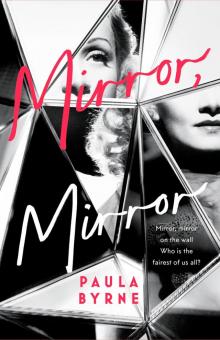 Mirror, Mirror
Mirror, Mirror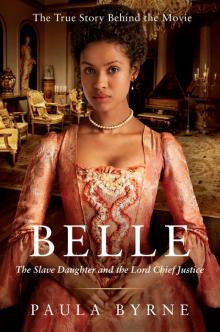 Belle
Belle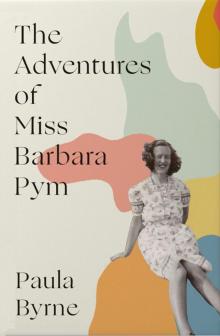 The Adventures of Miss Barbara Pym
The Adventures of Miss Barbara Pym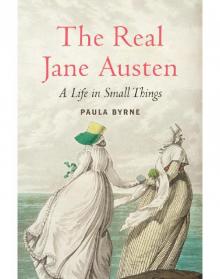 The Real Jane Austen
The Real Jane Austen Look to Your Wife
Look to Your Wife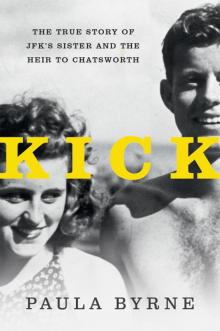 Kick
Kick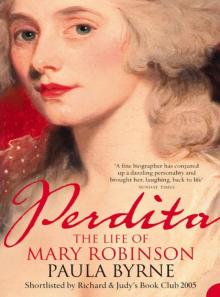 Perdita
Perdita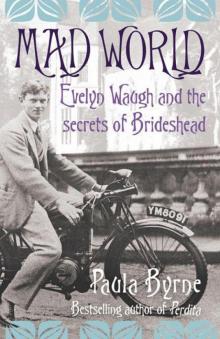 Mad World: Evelyn Waugh and the Secrets of Brideshead (TEXT ONLY)
Mad World: Evelyn Waugh and the Secrets of Brideshead (TEXT ONLY)